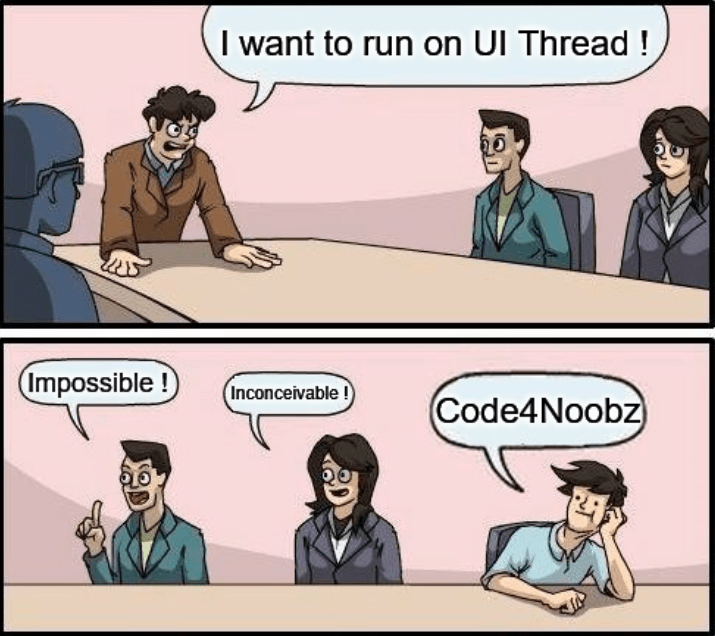Hello devz!
Typically, we want to get data from a distant service. This service can be slow, could not respond, or just be down… But can we still be robust in our application? Using the Retry Pattern with Polly, you can!
The Retry Pattern allows us to retry a task in case of exceptions, can put a delay between these retries, can manage timeout, etc…
Polly is an awesome open source project part of the .Net Foundation. Polly has many options and excels with it’s circuit breaker mode and exception handling.
In this simple example, I will demonstrate how to manage a transient operation using the Retry Pattern with Polly and C#.
using Polly;
using Polly.Timeout;
using System;
using System.Collections.Generic;
using System.Linq;
using System.Threading;
using System.Threading.Tasks;
namespace PollyTest
{
class Program
{
static void Main(string[] args)
{
var cancellationTokenSource = new CancellationTokenSource();
var cancellationToken = cancellationTokenSource.Token;
Console.WriteLine("This is an example of use of the Polly policies.");
Console.WriteLine("Here we will combine the Retry and the TimeOut policies.");
Console.WriteLine("\r\nPress 'c' to cancel operation...");
Task.Factory.StartNew(async () => await ExecuteTask(cancellationToken));
//Request cancellation from the UI thread.
char ch = Console.ReadKey().KeyChar;
if (ch == 'c' || ch == 'C')
{
cancellationTokenSource.Cancel();
Console.WriteLine("\nTask cancellation requested.");
}
Console.WriteLine("\r\nEnd of program, press any key...");
Console.ReadKey();
}
private static async Task ExecuteTask(CancellationToken cancellationToken)
{
var maxRetryAttempts = 10;
var pauseBetweenFailures = TimeSpan.FromSeconds(2);
var timeoutInSec = 30;
//Retry Policy
var retryPolicy = Policy
.Handle<Exception>()
//.Or<AnyOtherException>()
.WaitAndRetryAsync(
maxRetryAttempts,
i => pauseBetweenFailures,
(exception, timeSpan, retryCount, context) => ManageRetryException(exception, timeSpan, retryCount, context));
//TimeOut Policy
var timeOutPolicy = Policy
.TimeoutAsync(
timeoutInSec,
TimeoutStrategy.Pessimistic,
(context, timeSpan, task) => ManageTimeoutException(context, timeSpan, task));
//Combine the two (or more) policies
var policyWrap = Policy.WrapAsync(retryPolicy, timeOutPolicy);
//Execute the transient task(s)
await policyWrap.ExecuteAsync(async (ct) =>
{
Console.WriteLine("\r\nExecuting task...");
var result = await FailedOperation(ct);
}, new Dictionary<string, object>() { { "ExecuteOperation", "Operation description..." } }, cancellationToken);
return;
}
private static async Task<bool> FailedOperation(CancellationToken ct)
{
//Was cancellation already requested?
if (ct.IsCancellationRequested == true)
{
Console.WriteLine("Task was cancelled before it got started.");
ct.ThrowIfCancellationRequested();
}
//Simulate a too long operation to test the Timeout Exception
//await Task.Delay(35000);
//Cancel the operation if requested
if (ct.IsCancellationRequested == true)
{
Console.WriteLine("Task was cancelled !");
ct.ThrowIfCancellationRequested();
}
//Throw an error to see the retry mechanism
throw new Exception("A fake error occured...");
return true;
}
private static void ManageRetryException(Exception exception, TimeSpan timeSpan, int retryCount, Context context)
{
var action = context != null ? context.First().Key : "unknown method";
var actionDescription = context != null ? context.First().Value : "unknown description";
var msg = $"Retry n°{retryCount} of {action} ({actionDescription}) : {exception.Message}";
Console.WriteLine(msg);
}
private static Task ManageTimeoutException(Context context, TimeSpan timeSpan, Task task)
{
var action = context != null ? context.First().Key : "unknown method";
var actionDescription = context != null ? context.First().Value : "unknown description";
task.ContinueWith(t =>
{
if (t.IsFaulted)
{
var msg = $"Running {action} ({actionDescription}) but the execution timed out after {timeSpan.TotalSeconds} seconds, eventually terminated with: {t.Exception}.";
Console.WriteLine(msg);
}
else if (t.IsCanceled)
{
var msg = $"Running {action} ({actionDescription}) but the execution timed out after {timeSpan.TotalSeconds} seconds, task cancelled.";
Console.WriteLine(msg);
}
});
return task;
}
}
}Polly is a really useful tool to manage transient operations and contains many options. What we did here was just a simple tutorial containing the most important configuration settings.
Happy coding! 🙂





